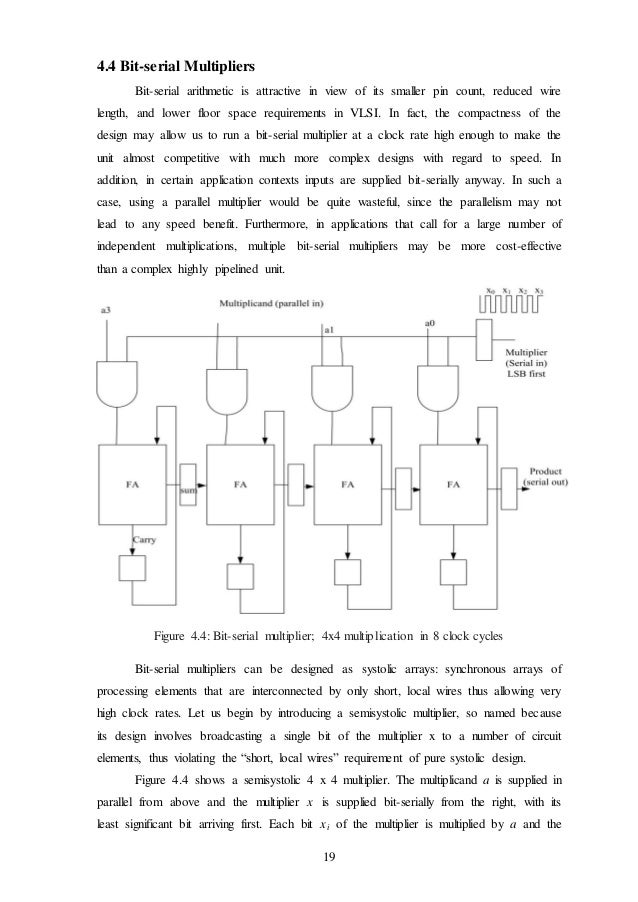
Bit Serial Arithmetic In Dsp
The digital base band filters are designed for use in some wide band research systems. Both the narrow band and the wide band filters use a wave digital lattice structure realized with bit-serial arithmetic. The clock generator is developed to increase the throughput in bit-serial designs such as the intermediate and the wide band filters above.
We just started a discussion of. Srs audio sandbox full crack cinema. In many ways the algorithm is much like any DSP algorithm: samples come in, multiplies, adds, and subtracts get applied, and samples go out. Like any other algorithm using these operations, every add or multiply will increase the number of bits required to represent the result. So it seems only fitting to look at bit growth, so we can know how many bits to allocate for our internal results.
Since dropping bits, once grown, is even more complicated than just tracking bit growth, we’ll save that discussion for it’s own post later. If you’ve never dealt with, or heard of, bit growth before then it can be confusing. It doesn’t need to be so. As we’ll show here, there are only two rules you need to keep track of. Follow the two basic rules, and you should be okay. That said, we’ll present three rules today. My basic approach for understanding bit growth is to look at the extremes of any N bit arithmetic operation, and see how many bits it takes to represent that extreme.
Indeed, if you ever get confused, just come back to this approach and examine the extremes of the values you are calculated within your application. Looking at the extremes in the representation, an N bit number, a, can be any one of a range of signed or unsigned values. In the case of signed, values, the range of an N bit number is given by, -2^(N-1) BWIDTH )? Obrazec zaklyucheniya kadastrovogo inzhenera dlya suda 1. ( AWIDTH + 1 ): ( BWIDTH + 1 ); input wire [( AWIDTH - 1 ): 0 ] a; input wire [( BWIDTH - 1 ): 0 ] b; output reg [( OUTWID - 1 ): 0 ] out; always @ ( posedge i_clk ) out.